NIL
NCAA colleges can pay athletes after US$2.8bn NIL settlement approved
US$2.8bn settlement resolves three antitrust cases against governing college sports body Division I athletes from 2016 onwards to be financially compensated by NCAA and power conferences Power conferences form regulatory body to oversee payments The National Collegiate Athletic Association’s (NCAA) US$2.8 billion settlement for three antitrust lawsuits has received final approval from a federal judge, […]



- US$2.8bn settlement resolves three antitrust cases against governing college sports body
- Division I athletes from 2016 onwards to be financially compensated by NCAA and power conferences
- Power conferences form regulatory body to oversee payments
The National Collegiate Athletic Association’s (NCAA) US$2.8 billion settlement for three antitrust lawsuits has received final approval from a federal judge, paving the way for member schools to directly pay student athletes.
First announced last year, the settlement resolves three cases that claimed the governing college sports body illegally restricted college athletes from earning money through name, image and likeness (NIL) endorsements.
The settlement will also establish a new revenue-sharing model in college sports, with schools able to pay their athletes roughly US$20.5 million in NIL revenue over the 2025/26 campaign. The annual cap is expected to rise annually over ten years and will take effect beginning on 1st July.
The NCAA, alongside its five power conferences, will also pay nearly US$2.8 billion in damages to Division I athletes who competed in college from 2016 onwards. The payments will be made over ten years.
Final approval was granted by Judge Claudia Wilken after changes were made with regards to roster limits, satisfying objections made to the settlement.
“This result is a fantastic win for hundreds of thousands of college athletes,” said Steve Berman, one of the lead attorneys for the plaintiffs. “We look forward to overseeing this process and watching the revenue-sharing benefits unfold for college athletes over the next 10 years.”
“Approving the agreement reached by the NCAA, the defendant conferences and student-athletes in the settlement opens a pathway to begin stabilising college sports,” wrote Charlie Baker, NCAA president, in a public letter. “This new framework that enables schools to provide direct financial benefits to student-athletes and establishes clear and specific rules to regulate third-party NIL agreements marks a huge step forward for college sports.“
The settlement is the culmination of a multi-year process.
In June 2021, the US Supreme Court unanimously ruled against the NCAA in a case, stipulating that the governing college sports body could not stop schools from paying athletes in education-related benefits. The comprehensive defeat left the organisation vulnerable to fresh legal challenges to its rules limiting compensation.
Since then, student-athletes have been able to earn money from third parties and companies through NIL deals. There has also been an increase in the involvement of boosters, which are payments made by collectives using NIL deals to recruit athletes to their favoured school.
Now, schools will be responsible for NIL spending. Last year, a federal judge issued an injunction preventing the NCAA from enforcing rules to stop schools from making NIL payments when recruiting athletes.
To regulate payments from schools and boosters, the power conferences have launched a new regulatory body called the College Sports Commission. It has hired Bryan Seeley, the executive vice president of legal and operations at Major League Baseball (MLB), as its chief executive.
In a statement, the commission said Seeley and his team would ‘build out the organisation’s investigative and enforcement teams and oversee all of its ongoing operations and stakeholder relationships’.
‘Seeley and his team will also be responsible for enforcement of the new rules around revenue sharing, student-athlete third-party name image and likeness (NIL) deals, and roster limits,’ the commission said.
‘The commission will investigate potential rules violations, make factual determinations, issue penalties where appropriate, and participate in the neutral arbitration process set forth in the settlement as necessary.’
NIL
NBA Draft: Why it’s unlikely there will be a Jalen Brunson or Nikola Jokić in this year’s second round
Apologies to any teams hoping to unearth the next Draymond Green, Jalen Brunson or Nikola Jokić in the second round of this year’s NBA draft. Overlooked gems could be unusually scarce Thursday night with so many prospects returning to college to take advantage of the skyrocketing NIL market. Advertisement In the pre-NIL era, college basketball […]
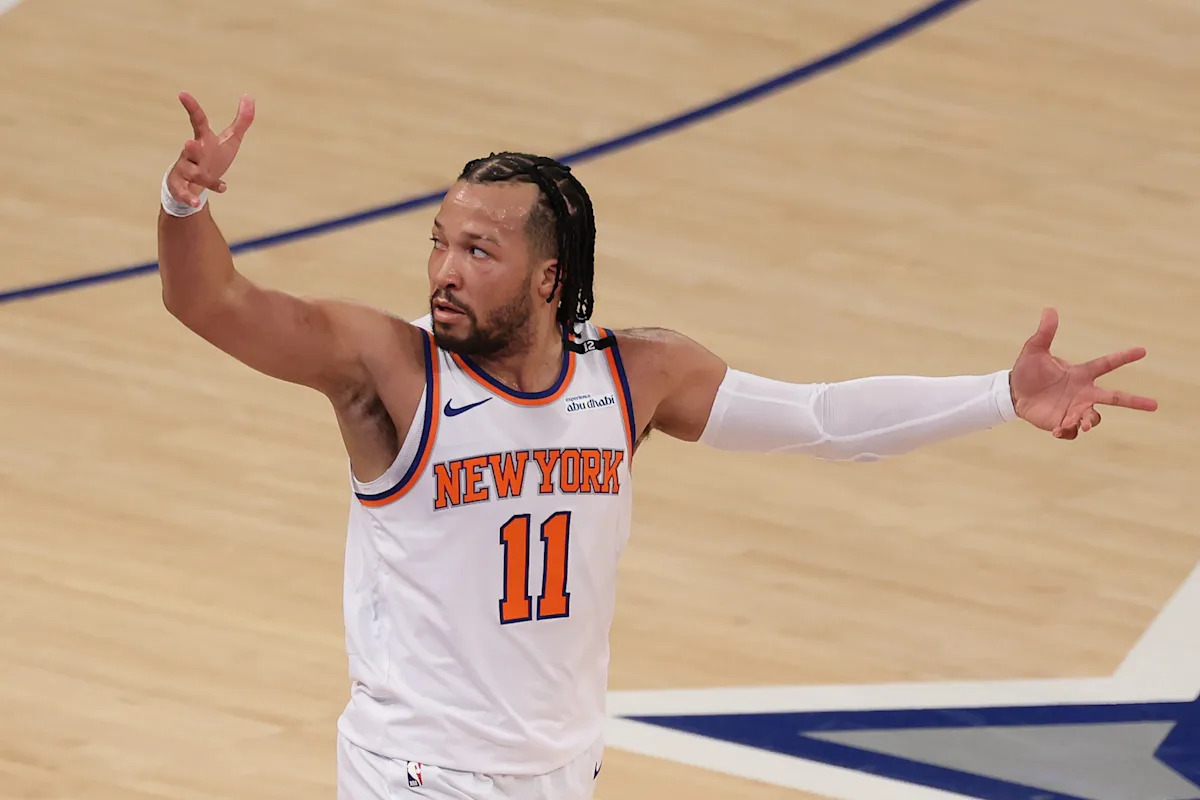
Apologies to any teams hoping to unearth the next Draymond Green, Jalen Brunson or Nikola Jokić in the second round of this year’s NBA draft.
Overlooked gems could be unusually scarce Thursday night with so many prospects returning to college to take advantage of the skyrocketing NIL market.
Advertisement
In the pre-NIL era, college basketball underclassmen routinely entered the NBA Draft even if they were projected to slip to the second round or go unselected. They earned more money chasing an NBA two-way contract or an overseas payday than they could returning to a college model where the only payouts came under the table.
The calculus began to change in 2021 when a series of court rulings forced the NCAA to allow athletes to benefit financially from their name, image and likeness without fear of penalty. This spring, underclassmen who were fringe NBA prospects returned to college in record numbers because deep-pocketed college programs were willing to pay them as much as $3 million to $4 million per year.
Only 106 players entered the 2025 NBA Draft as early entry candidates, the lowest number since 2015 and down from a peak of 353 in 2021. More than half those 106 early entrants then withdrew from the draft before the NBA’s deadline — even some who might have been selected in the 20-45 range this week.
Advertisement
Texas Tech’s JT Toppin, Florida’s Thomas Haugh, UConn’s Alex Karaban, Duke’s Isaiah Evans and Purdue’s Braden Smith and Trey Kaufman-Renn were among the prominent college stars who did not even test the waters this spring. Alabama’s Labaron Philon, Kentucky’s Otega Oweh and Auburn’s Tahaad Pettiford withdrew from the draft just before the May 28 deadline for underclassmen to make their decisions. So did Houston’s Milos Uzan, Florida’s Alex Condon, Michigan’s Yaxel Lendeborg and San Diego State’s Miles Byrd.
“This year’s draft class, more than any ever, has been affected by the NIL and affected by the new pay-for-play,” Boston Celtics general manager Brad Stevens told NBC Sports Boston last month. Stevens added that the absence of the prospects who returned to college would be felt in “the back end of the draft and even into the late first.”
That much was apparent from the lists of best available players entering Thursday night’s second round. Many were college seniors, from Stanford’s Maxime Raynaud, to Creighton’s Ryan Kalkbrenner, to Auburn’s Johni Broome. Others were international prospects like Noah Penda and Bogoljub Marković.
Advertisement
Among the players listed as potential second-round picks by Yahoo Sports NBA Draft expert Kevin O’Connor are undersized guards like West Virginia’s Javon Small, catch-and-shoot specialists like Kentucky’s Koby Brea and athletically limited big men like Villanova’s Eric Dixon. Those are the types of players who likely wouldn’t be selected in previous deeper drafts.
The good news for NBA teams is that the dearth of second-round talent could be a short-term problem. Some prospects who returned to college this year will exhaust their eligibility by 2026. Others could have more incentive to chase NBA money in the future.
The House vs. NCAA settlement puts a cap on how much colleges are allowed to pay athletes via revenue sharing and calls for the establishment of a new enforcement entity responsible for stamping out the pay-for-play deals that have dominated the NIL era of college sports. Athletes are required to submit to the new NIL Go clearinghouse all third-party NIL deals that exceed $600. The clearinghouse then must determine which deals are for a valid business purpose and are within a “reasonable range of compensation” and which are simply a recruiting incentive.
Advertisement
How will the clearinghouse determine which deals are circumventing NIL rules and which are legitimate? Nobody knows. Nor does anyone know whether the clearinghouse’s decisions will hold up in court against a legal challenge.
The answers to those questions will determine whether future fringe NBA prospects turn pro as quickly as possible or keep returning to college in record numbers.
That trend will only continue if the seven-figure NIL money is still available.
NIL
College quarterbacks turning NIL earnings into venture capital investments
Credit: Jeremy Reper-Imagn Images College athletes are channeling their NIL earnings into venture capital investments. Front Office Sports reports that three college quarterbacks — including a potential top-five pick — are putting their money into VC-backed start-ups. South Carolina’s LaNorris Sellers — projected as one of the top signal-callers in the 2026 NFL Draft — […]
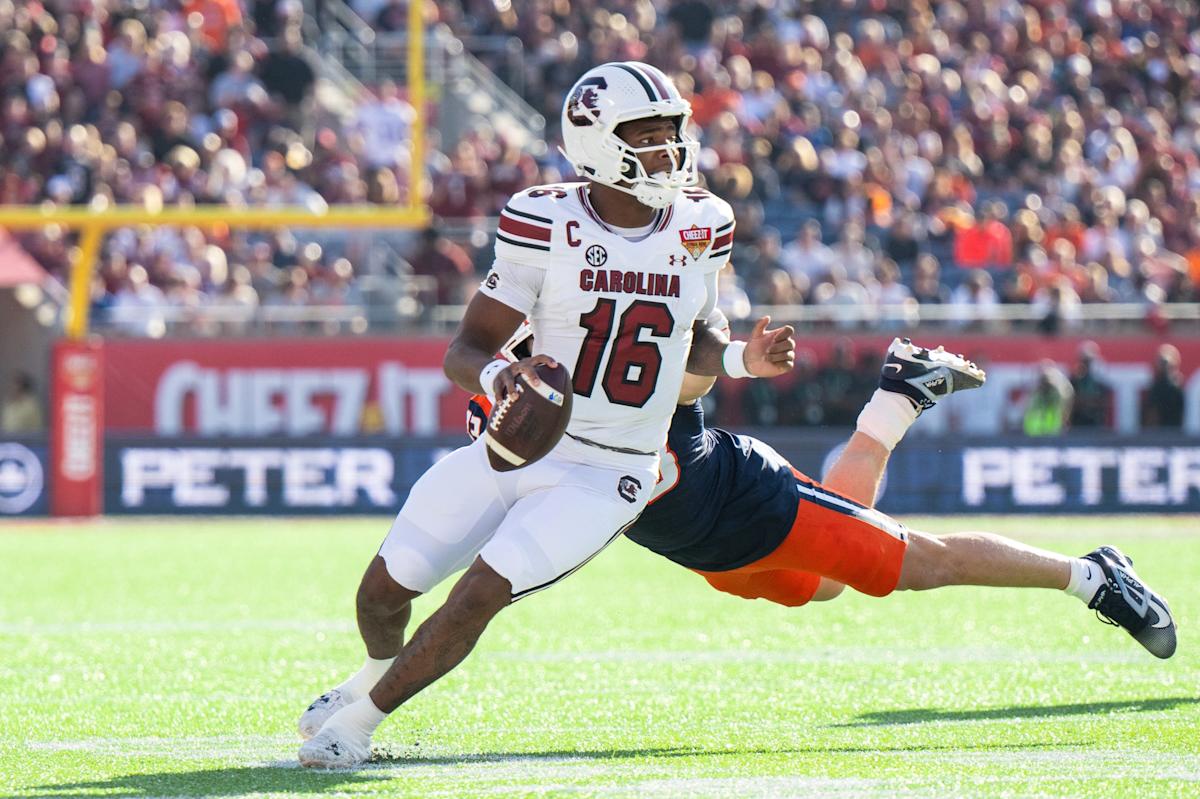
College athletes are channeling their NIL earnings into venture capital investments. Front Office Sports reports that three college quarterbacks — including a potential top-five pick — are putting their money into VC-backed start-ups.
South Carolina’s LaNorris Sellers — projected as one of the top signal-callers in the 2026 NFL Draft — Southern Methodist University’s Kevin Jennings and Kansas State University’s Avery Johnson have invested in The Cashmere Fund. According to Front Office Sports, the fund is a “Nasdaq-listed venture capital fund that allows non-accredited investors to invest in VC-backed start-ups.”
Buffalo Bills players Josh Allen and Damar Hamlin are also investors.
“There was some business savvy in all of them,” Elia Infascelli, CEO of Cashmere, told Front Office Sports. “Avery Johnson is a business major, for example. They didn’t need to do this, but they wanted to.
“They are investors in the fund just like any other person would invest in the fund.”
Cashmere is working with college athletes to bring more attention to their fund and attract additional investors.
“At 18, 19, or 21, to think about long-term relationships and invest without any immediate upside today, that’s rare,” Infascelli explained.
NIL has created new opportunities for college athletes. For those who won’t turn pro, these ventures offer a path to financial stability beyond their college careers.
Related Headlines
NIL
Green Adds Five to 2025 Fall Softball Roster
Story Links CONWAY, S.C. – Coastal Carolina softball head coach Kelley Green announced the addition of five transfer student-athletes to the 2025 fall roster on Thursday afternoon. Joining the Chanticleers are graduate students Savannah Jones and Kaelin Cash, senior Mackenzie Childers, junior Hannah Bendle, and sophomore Reagan Troy. The group will […]
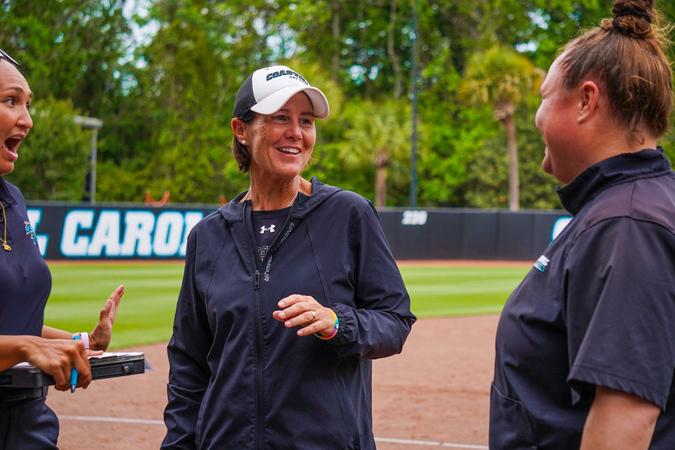
CONWAY, S.C. – Coastal Carolina softball head coach Kelley Green announced the addition of five transfer student-athletes to the 2025 fall roster on Thursday afternoon.
Joining the Chanticleers are graduate students Savannah Jones and Kaelin Cash, senior Mackenzie Childers, junior Hannah Bendle, and sophomore Reagan Troy. The group will be joined by six incoming freshmen, Bailey Huff, Leah Kendall, Georgia Moss, Izzy Ramirez, Kelsey Sawvell, and Sara Zink, who signed with Coastal during National Signing Day on Nov. 13.
Savannah Jones
A four-year transfer from Bucknell University, Jones made her mark in the Patriot League earning All-Conference first team honors in 2024, along with second team recognition in 2023 and 2025. The Danville, Ind., native had a stellar senior season picking up three Pitcher of the Week selections while being named to the Patriot League All-Tournament team. In addition to her dominance in the circle, she contributed at the plate with a .253 batting average, tallying 96 hits, 45 runs, and 63 RBIs, and a .310 on-base percentage.
Green on Jones: “Savannah does a great job keeping hitters off-balance with her elite level change up and ability to pepper the corners.”
Hannah Bendle
Bendle joins the beach after two successful seasons at Saint Francis, where she earned All-Northeast Conference honors and was recognized as an NEC Prime Performer. A native of New Concord, Ohio, she posted a .299 batting average over 83 career games with the Hawks, collecting six home runs, 35 RBIs, and 49 hits. Prior to her collegiate career, Bendle was a highly decorated high school athlete, earning two first team all-state selections, three first team all-district nods, and two MVL Player of the Year awards.
Green on Bendle: “Hannah is an athletic middle infielder with a strong lefty bat and is always a tough out in the box.”
Kaelin Cash
Cash began her collegiate career at Saint Joseph’s, where she earned Atlantic 10 All-Rookie Team honors in 2022, followed by first team All-Conference recognition and a Player of the Week nod in 2023. During her standout sophomore season, she ranked third in program history for single-season home runs with 12 and led the conference in both slugging percentage and OPS. The Greenwood, Ind., native transferred to Michigan State in 2024 where she was an All-Big Ten second team selection and an NFCA All-Region second team selection during her senior year.
Coach Green on Cash: “Kaelin is a big-time player with a power bat and will be a great addition to our lineup.”
Reagan Troy
A four-year letterman at Broad Run High School, Troy was ranked the No. 31 prospect in the Class of 2024 by Extra Innings Softball. In 2023, she earned All-Dulles District first team honors and was named to the all-region second team. She also picked up Rookie of the Year honors in 2021. Over her high school career, she recorded an impressive 173 strikeouts across 129.1 innings pitched.
Coach Green on Troy: “We are excited to have Reagan in Teal. She has all the tools and drive to be an elite pitcher in the Sun Belt and beyond.”
Mackenzie Childers
A senior from North Texas University, Childers made a name for herself in the circle as a two-time American Athletic Conference (AAC) Pitcher of the Week and an ACC Weekly Honor Roll honoree during her sophomore season. The Little Rock, Ark., native tallied 12 career wins, posting a 3.82 ERA across 54 appearances and 23 starts. Over 141.0 innings of work, she struck out 164 batters and held opponents to a .203 batting average.
Coach Green on Childers: “Mackenzie is a power pitcher with a history of success against elite hitters and will be an integral part of our pitching staff.”
For complete coverage of CCU softball, follow the Chanticleers on social media at @CoastalSoftball (X), @GoCCUSports (Instagram), and facebook.com/CCUChanticleers (Facebook) or visit the official home of Coastal Carolina Athletics at goccusports.com.
NIL
Why college basketball’s schedule expansion could spell bad news for some programs
According to recent reports, the number of regular-season games that college basketball programs can schedule will increase from 31 to 32. This increase is not a requirement but allows programs an additional scheduling slot and flexibility. This move is not a major change and shouldn’t greatly affect the sport, but was it a good move […]
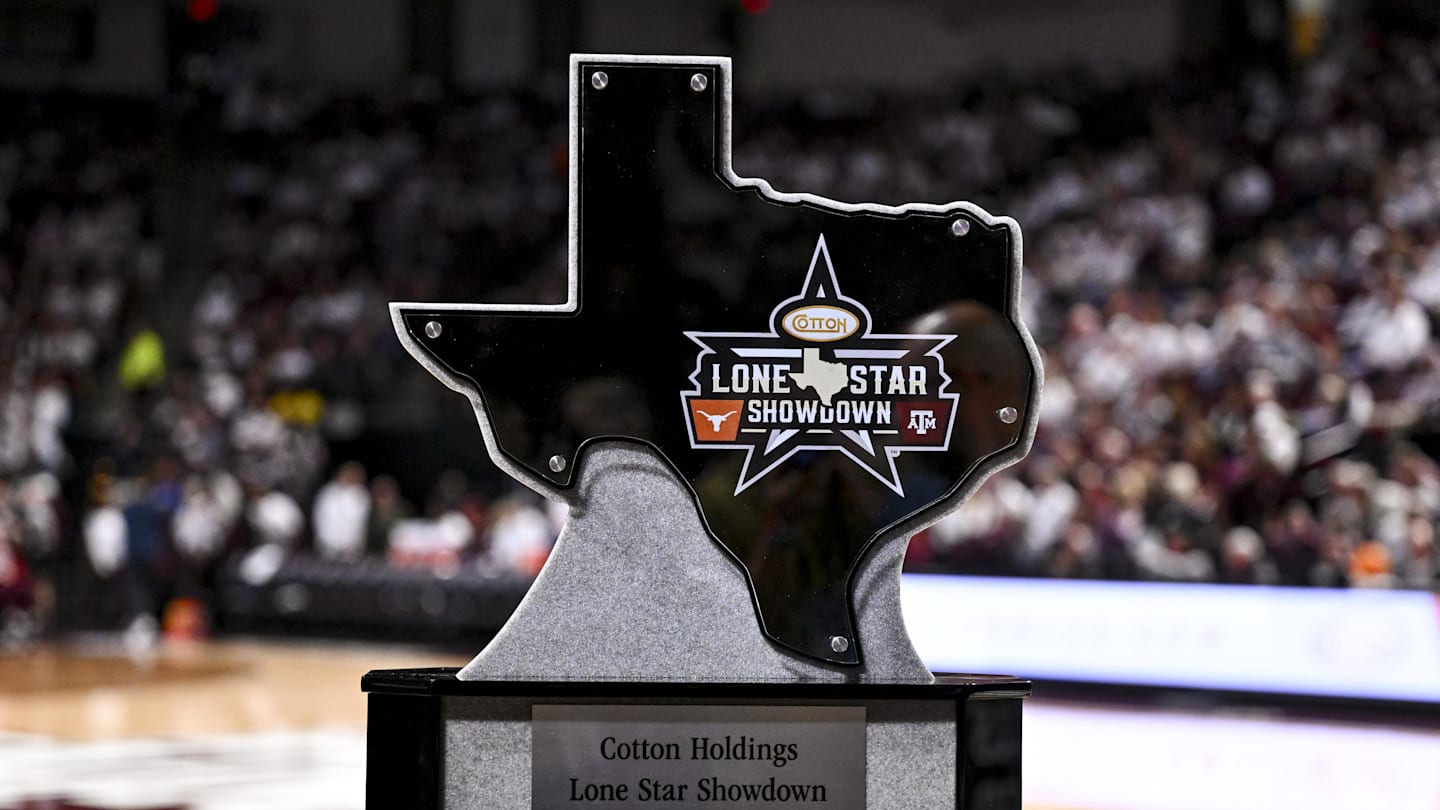
According to recent reports, the number of regular-season games that college basketball programs can schedule will increase from 31 to 32. This increase is not a requirement but allows programs an additional scheduling slot and flexibility. This move is not a major change and shouldn’t greatly affect the sport, but was it a good move or a bad move?
If you’re members of a league like the Big Ten or SEC then it’s definitely good news for you and your program. Those leagues have competitive 20-game league schedules which don’t leave a ton of room in nonconference. When you throw in holiday tournaments, conference challenges, and other rivalry matchups, you may have some of those teams with only 5 or 6 games left on their schedule. This addition gives them another opportunity to build their resumes and fit other exciting games on the docket.
You can easily look at this addition with an optimistic eye for the rest of the college basketball universe. A glaring example is in the ACC, a bona fide power conference that really struggled last season. NCAA Tournament teams like Duke, Clemson, and Louisville had to play more than a dozen games each against league members who were really struggling and certainly could have used an extra game to play a stronger opponent.
However, this move seems just like another power conference power grab that will have significant downsides for mid-major programs. Consider the current state of scheduling for those leagues. Prominent mid-majors aren’t getting games against power conference teams that will actually help their resumes and adding just another open slot isn’t going to change that. Do you really think that with an extra game on the schedule that the Alabama’s or North Carolina’s of the world are really going to want to play an upstart mid-major like Chattanooga or High Point?
It’s important to remember that this 32nd game is not required. It’s very likely that if it was it would lead to a great number of games against non-D1 opponents, something that already litters the schedules of a majority of low-major programs. One hope is that this extra opportunity could help create new conference challenges or other regular matchups but agreeing to these types of things is a two-way street.
When March rolls around after this change goes into place, you’ll have those ACC, Big Ten, and SEC teams with even more meat on their resumes while the mid-majors are placed even further behind the 8-ball. You could argue whatever you wanted about how additional opportunities are great for this sport and you wouldn’t be wrong, but remember what teams like Oral Roberts, Princeton and Saint Peter’s have done in recent years.
None of those three programs are in the same shape as their recent NCAA Tournament runs but you’d be hard-pressed to find a power conference program that would have wanted to play any of them at their peak, even at home. There’s no upside in playing these great mid-majors. That 32nd game for Duke or Kentucky likely becomes part of a tournament or a neutral-site game against another major team. That 32nd game for North Carolina Central or Northern Kentucky either doesn’t happen or isn’t exactly a highlight of the season.
In the end, this extra game is a relative good but it’s not as great of news as it initially seems. It’s a reminder that building a great schedule in college basketball continues to be a losing battle for strong mid-major programs. An extra chance to see star players will be fantastic but don’t get your hopes up for your favorite school to suddenly have a trip to Durham on the docket.
NIL
USC Trojans, Big Ten Make Massive Direct Payment Move To Athletes With PayPal
In the growing world of Name, Image, and Likeness (NIL) deals, the Big Ten and the payment company, PayPal, agreed to a deal that will allow student-athletes to be paid directly through the app. The Big 12 is the other conference to sign the agreement. With student-athletes able to receive compensation, the agreement will allow […]
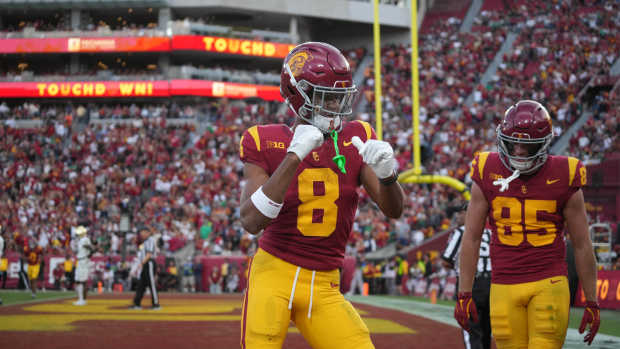

In the growing world of Name, Image, and Likeness (NIL) deals, the Big Ten and the payment company, PayPal, agreed to a deal that will allow student-athletes to be paid directly through the app. The Big 12 is the other conference to sign the agreement.
With student-athletes able to receive compensation, the agreement will allow the programs, such as the USC Trojans, to pay its students exclusively through PayPal.
“We’re proud to help lead this transformation in college athletics by making it easier and faster for student-athletes to get paid and continue to bring trusted and innovative commerce solutions to the heart of campus life,” PayPal President and CEO Alex Chriss said in a statement.
In addition to paying student-athletes directly, PayPal will be introducing conference-branded debit cards with each school’s logo. This is a way for not only the players to get involved with the deal, but college students and fans as well.
The agreement will be going into effect quickly. On June 6, Judge Claudia Wilken approved the deal to allow programs to pay their athletes directly. With the House Settlement taking effect on July 1, PayPal claimed the initial rollout is expected to start this summer.
With the approval, programs will be allowed to pay student-athletes, with the annual cap beginning at roughly $20.5 million per school in 2025-2026. It will be broken up by each sport, with college football players expected to earn the most. Both men’s and women’s basketball will also earn a share with the remainder being spread among the other sports.
MORE: Reggie Bush’s Legal Appeal Fails: Ordered To Pay $1.4 Million In Defamation Case
MORE: USC Trojans’ State-of-the-Art Football Facility Construction Update
MORE: 4-Star Recruit Khalil Terry Rocks USC Trojans Gear After Michigan State Decommitment
The USC Trojans are planning to share the maximum allowed with its student-athletes right away, per a statement released shortly after the settlement.
“Since the preliminary approval of the house settlement in Fall 2024, USC Athletics leadership has worked diligently to develop a road map to ensure we win the new era of college athletics. With today’s final approval of the settlement, we are ready to invest even more in our student-athletes to the maximum allowable levels, and we look forward to what comes next.”
In the NIL era of college sports, the USC Trojans have been one of the most successful programs. USC coach Lincoln Riley is outspoken about his excitement for the new landscape and what the future holds for the sport.
The USC Trojans hold the No. 1 ranked recruiting class of 2026 and have been able to land commitments from top players through NIL. While the baseline of recruiting is still getting to know recruits and showing how they can fit in with a program, when a prospect is down to a couple of schools, NIL can play a role.
USC received a commitment from four-star edge Luke Wafle recently. While USC was in the lead for Wafle, the Ohio State Buckeyes made a last-second push, boosting their NIL offer. USC was able to one-up Ohio State, landing the No. 1 recruit from New Jersey.
With the Trojans’ excitement around NIL, the program can continue to bring in and spend money on top recruits. The deal with PayPal will provide USC with an organized method of paying their student-athletes.
NIL
Miami Heat draft Illini guard Kasparas Jakucionis with No. 20 pick in 2025 NBA Draft
The Miami Heat drafted Illinois freshman guard Kasparas Jakucionis with the No. 20 overall pick in the 2025 NBA Draft on Wednesday. One of the top international prospects in the world, Jakucionis earned Third Team All-Big Ten and Big Ten All-Freshman for Illinois this season after averaging 15.0 points, 5.7 rebounds and 4.7 assists while shooting 44.0% from the field […]
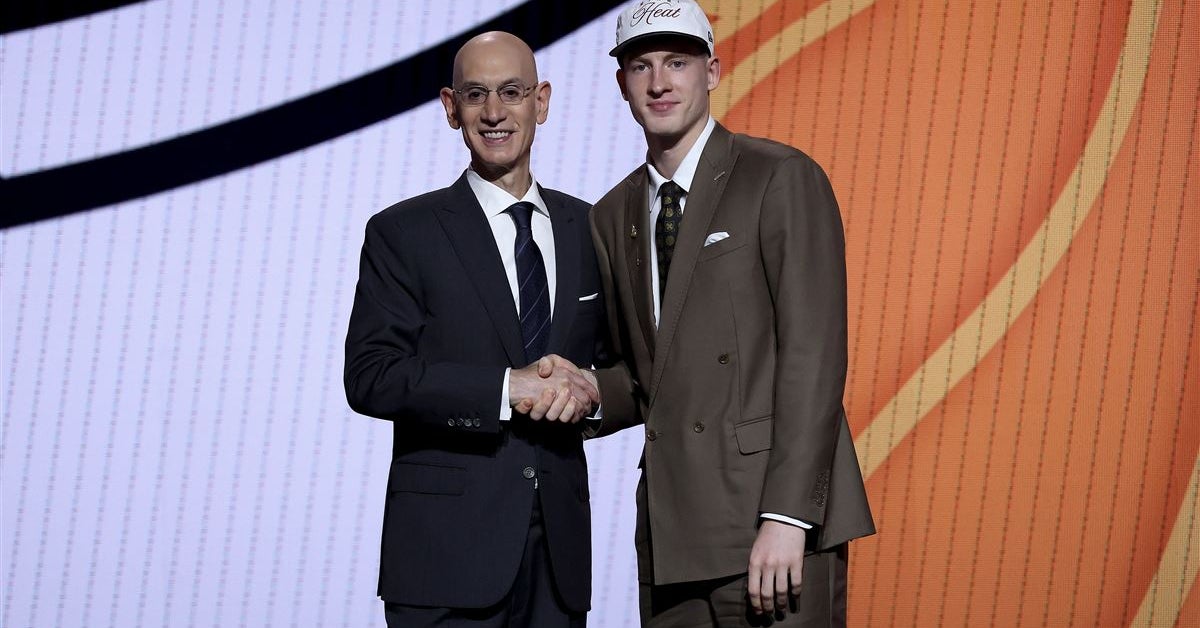
The Miami Heat drafted Illinois freshman guard Kasparas Jakucionis with the No. 20 overall pick in the 2025 NBA Draft on Wednesday.
One of the top international prospects in the world, Jakucionis earned Third Team All-Big Ten and Big Ten All-Freshman for Illinois this season after averaging 15.0 points, 5.7 rebounds and 4.7 assists while shooting 44.0% from the field and 31.8% from three.
Jakucionis, who just celebrated his 19th birthday in late May, started the season on a tear before a midseason wrist injury and late-season slump.
The 6-foot-6 guard from Lithuania averaged 16.7 points on 50% shooting (41.6%) three to go along with 5.4 rebounds and 5.4 assists during his first 15 games to lead Illinois to a 12-3 start. Jakucionis then suffered a wrist injury and missed two games but had five 17+ point performances in an eight-game stretch to seemingly bounce back. But Jakucionis struggled in his final nine games at Illinois, averaging 12.2 points on 36% shooting (25% three) with more turnovers (38) than assists (26).
Still, Jakucionis had one of the most productive freshmen seasons in Illinois history. He set the Illinois freshman record for 20+ point games (10) and averaged the fourth most points (15.0) by an Illini freshman behind only Kiwane Garris (15.9), Cory Bradford (15.4) and Deon Thomas (15.1) while also averaging the fourth-most assists (4.7) by an Illini freshman and the seventh-most rebounds by an Illini freshman (5.7).
“Kasparas had a fantastic year, and I am so impressed with how well he handled all that was thrown at him,” head coach Brad Underwood said in a statement in April. “To come in at 18 years old, new country, new program, new teammates, and be handed the keys and tasked with running the offense against the competition he faced every night, that’s a lot to ask of a freshman. But he impacted the game in every area, by scoring, decision making and passing, and rebounding. KJ is successful because of his love for the game, his intelligence, his work ethic, his desire to be great, and most importantly his character. Those traits will continue to serve him well in the NBA.”
Why it matters: Jakucionis is the first Illinois basketball player to become a one-and-done NBA Draft pick. Furthermore, Illinois has now had first-round draft picks in back-to-back years for the first time since Frank Williams and Brian Cook were selected in the first round in 2002 and 2003, respectively. The Minnesota Timberwolves selected Illini guard Terrence Shannon in the first round (No. 27 overall) last year.
How he fits: Jakucionis fell farther than most expected, but what a landing spot for him. He will play next to a top-tier scorer in Tyler Herro and complements him well as a big lead guard who can distribute for others, including great three-point shooters in Duncan Robinson and Nikola Jovic, but Jakucionis can also play off the ball. Jakucionis isn’t a strong defender, but he should be helped playing alongside two very good defenders in Bam Adebayo and Andrew Wiggins. He’ll also be coached by one of the best coaches in the NBA in Eric Spoelstra. The wait was longer than expected, but the fit might be as good as it gets.
What it means: After a sensational run last spring and summer against international competition, Jakucionis came to Illinois as a first-round draft pick, but he only boosted his stock while in Champaign. He had a rough last month, but Jakucionis was one of the Big Ten’s best players for most of last season and showed he can succeed against top-tier competition. His success only strengthens the Illini’s recruiting pitch in Europe moving forward as Illinois looks to build a Gonzaga-like presence abroad.
GET 50% OFF ILLINI INQUIRER VIP: Get Illini Inquirer for 50% OFF for a limited time only! Join the No. 1 independent source of Illini Inquirer for our best deal of the year. For a limited time, you can get the best Illinois Fighting Illini coverage of the transfer portal and offseasons for Illini basketball and Illini football. All for just $4.48 per month and 15¢ per day! All new members can receive this great deal: 50% off an annual VIP membership for your first year! That’s a savings of more than $60! So sign up now!
-

 Motorsports2 weeks ago
Motorsports2 weeks agoNASCAR Weekend Preview: Autódromo Hermanos Rodríguez
-

 Motorsports2 weeks ago
Motorsports2 weeks agoNASCAR Through the Gears: Denny Hamlin has gas, a border needs crossing, and yes, that’s a Hemi
-

 NIL3 weeks ago
NIL3 weeks agoShai Gilgeous
-

 Health3 weeks ago
Health3 weeks agoNew Era Begins As House Settlement Approved
-

 Motorsports2 weeks ago
Motorsports2 weeks agoNASCAR Race Today: Mexico City start times, schedule and how to watch live on TV
-

 Health2 weeks ago
Health2 weeks agoGymnast MyKayla Skinner Claims Simone Biles 'Belittled and Ostracized' Her amid Riley …
-

 High School Sports2 weeks ago
High School Sports2 weeks agoHighlights of the Tony Awards
-

 NIL2 weeks ago
NIL2 weeks agoTennessee law supersedes NCAA eligibility rule
-

 College Sports2 weeks ago
College Sports2 weeks agoFisk to discontinue history-making gymnastics program after 2026 | Area colleges
-
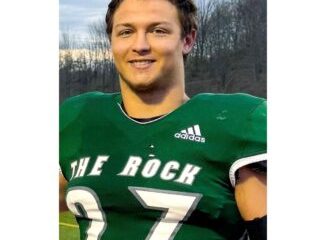
 Health3 weeks ago
Health3 weeks agoParents Create Fund in memory of son, raise awareness about suicide and mental health



































